|
At the moment, Lyra and Hercules are high in the high, and Uranus and Neptune are near the annual oppositions. This got me thinking. My refractors are everything I'd hoped they'd be, but would they really have enough aperture to satisfy me if I wanted to glimpse the ring nebula? What would they show me if I wanted to track down M13, the Hercules Globular Cluster - which to my continual amazement I'd never seen (until this entry)? Would they show me any color if I managed to find Uranus, or would the planet be just another grey dot? I was thinking about these questions and fighting off aperture fever - a menace that has claimed me before - when I received news that the research budget I receive from my university would be doubled, as of this year. One way I use my telescopes is to imagine what astronomers from a bygone age might have seen when they looked at the Moon and Mars, which in turn helps me to write about the history of space. That's research, so it's easy for me to justify astro-expenses from my research account. And then - the final nail in the coffin - I spotted one of Celestron's six-inch schmidt cassegrain telescopes (a C6) on sale, brand new, for less than $400. I bit the bullet and bought the telescope, in the hopes that I might at the very least be able to use it with my students (with whom I'd rather not use much more expensive telescopes). At first glance, the C6 certainly looked nice with my sturdy little mount and tripod (a Berlebach Report 312 tripod and VAMO Traveller mount). Yet on closer inspection, it had no fewer than three little blemishes - including a spot on the corrector - and that was just too much for me. I returned it, disappointed . . . and then noticed an equally good sale on an eight-inch, orange-tube, Nexstar SCT. The C6 had seemed rock solid on my mount and tripod, so I suspected that the C8 would be sufficiently solid, too. The C8 was also lighter than the Edge HD that I had recently given away. With a sale so good, I couldn't resist pulling the trigger. The finish on these Nexstar tubes - like that on the Edge tubes - is just much nicer than the glossy black on other Celestron SCTs. There's a depth to them and they don't get covered with hand prints as easily. On the other hand, the orange tubes don't have a handle on the back, and that handle is the kind of little luxury that makes everything from stowing to using a telescope that much easier. The wonderful thing about my new mount and tripod is that they're light enough for me to bring both my C8 and my TV 85 to an observing site - like our observation deck, for example. That's a game changer for me, because it means I can observe with a wonderful instrument as the SCT acclimates. I did just that on my first night with my new C8. The temperature was only a few degrees cooler than it had been in my apartment, so after about 30 minutes I hoped that the C8 would be ready to use. I had just been viewing Saturn with my TV 85. The view was crisp and the color was perfect, but the planet bobbed around in the currents coming off my building. I was apprehensive when I switched to the SCT and inserted a 25mm Plossl. Yet to my astonishment, the view was much, much clearer than it had been through my Edge. The planet was far brighter - no surprise there - and a few new moons snapped into view. When I turned to higher magnifications the view abruptly degraded. In fact, in the heat currents coming off our building the TV 85 handled higher magnifications better than the SCT. Still, the crystal-clear view at lower magnifications suggested to me that I had a much better sample than the Edge I'd previously owned. I used the same setup on another night, switching from the TV 85 to the C8 after a half hour or so. This time, temperatures were around 16 degrees Celsius - a good deal cooler than inside. Yet again, the SCT had acclimated completely. I suspect it acclimates more quickly than the Edge, despite the vents on the Edge.
The C8 is about as solid on my mount and tripod as the Takahashi, which is to say a bit less solid than the TV 85, but more than good enough for my purposes. Again, Saturn bounced around. But the rising Moon was spectacular, with extraordinary detail through the TV 85 and - again to my surprise - especially the C8. Once again the C8 did not take high magnifications quite as consistently well as the TV 85, but at times I could glimpse some impressive detail when the seeing cleared up. Towards the end of my short observing session, I decided to hunt for the Hercules Globular, in the hopes of seeing it for the first time. I began with a 55mm, 2-inch Plossl on my TV 85. Although I had to crane my head in some awkward angles, at last - at last! - I spotted the cluster. It was pretty bright on the deck and so the view was dim, but there: I'd found it. Switching to the C8 and using averted vision gave me a very satisfying view: countless tiny stars coming into focus around the core. Someday, I'd love to see it under darker skies. So yes, I remain a refractor guy - the TV 85 is still my favorite telescope - but it sure is nice to have the mobile aperture of a quality C8. I'd always loved the promise of the Edge, and now I have much of it back. I likely won't use the C8 much in the winter, but it will be great to use it with the TV 85 in the warmer seasons.
0 Comments
So the Takahashi, it turns out, is a pretty good telescope. I've now used it a few times on my observing deck, after amassing all those little accessories, and systematically exchanging my good-but-not-great eyepieces for top-of-the-line TeleVues. Jupiter and Saturn - both near their oppositions when I received the telescope - can in good seeing look even better (!) through the Takahashi than they do through my TV 85. The difference is not huge, however, and the TV 85 does have some advantages over the slightly bigger FC-100DC. It cools down almost instantaneously - the Takahashi might take just a bit longer - and it has a wonderful size and feel: compact but solid, like a piece of metal. Visually it's no slouch at all, and I just like the TeleVue mechanics a bit more than the Takahashi equivalents. The dual-speed TeleVue focuser, for example, is just so smooth, whereas the single-speed Takahashi equivalent is stickier. There are also so many little extenders and parts to screw and unscrew with the FC-100DC - Takahashi sure doesn't make it easy to decipher what should and shouldn't be attached to the telescope - and even when I've got the right setup some of my eyepieces still don't come into focus. It will be better on good nights than the TV 85, and perhaps meaningfully better on red objects - like Mars - given that red light does not quite come into focus in the TeleVue as it does in the Takahashi, but it's more finicky and I'll use it less frequently. You just can't beat the TV 85 for grab-and-go . . . but it sure is nice to have the slightly bigger Takahashi. I've been experimenting with iPhone astrophotography. The image above is the best I've taken of Saturn so far. If I try to take a picture, all I get is a brilliant white oval. But if I take a video, I can usually get a few frames that look like Saturn - albeit so much blurrier than what I see through my eyepiece. Up on my observation deck, the planets bounce around wildly in the currents coming off my building - and in the currents of our often-turbulent atmosphere. My iPhone naturally translates that bouncing into noise: the blurriness in my attempted astrophotographs, and the corresponding lack of contrast. Jupiter is completely washed out, no matter what I do. But Saturn is just dim enough and high enough in contrast to look like something. In the above picture, you can make out the Cassini Division and some cloud belts. Not bad for an iPhone production! Lunar photography is a bit easier. Views through my telescopes are incredibly crisp - razor-sharp on the best nights - but of course all that sharpness disappears in the pictures. Yet the Moon is so big and the views are so clear that it doesn't matter as much as you'd think. Sometimes the pictures are still quite satisfying. I really liked taking these pictures of the lunar terminator, which feature a crater, Gassendi, that was the focus of nineteenth- and early twentieth-century debates about changes in the lunar environment (and the possibility of lunar life). You can also see just how bright it can be on our observation deck. I'm very much looking forward to when the mosquitoes have abated enough for me to try a local park.
|
Archives
March 2024
Categories
All
|
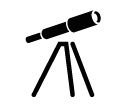
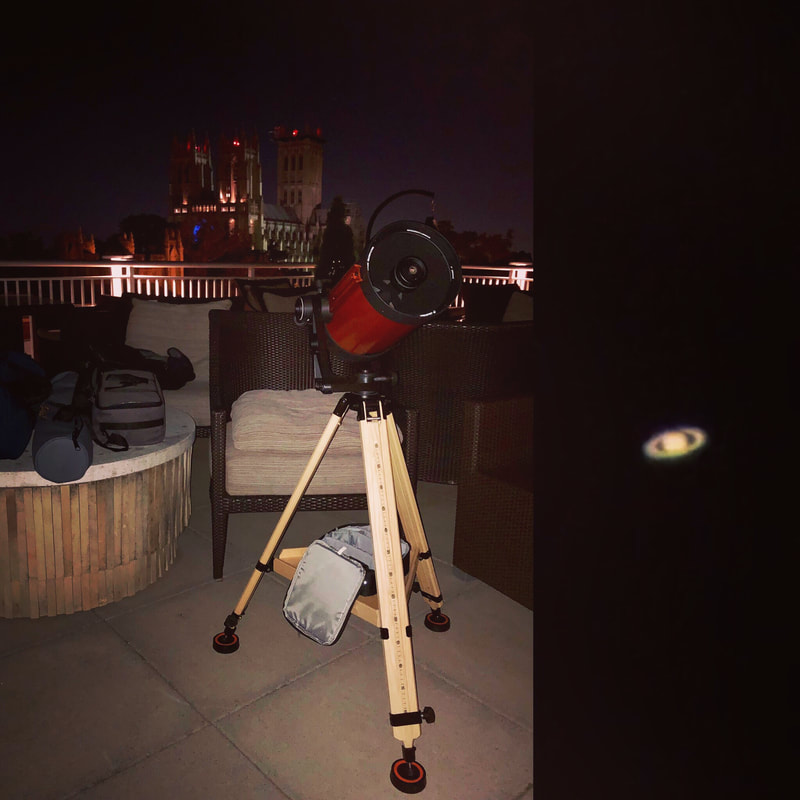
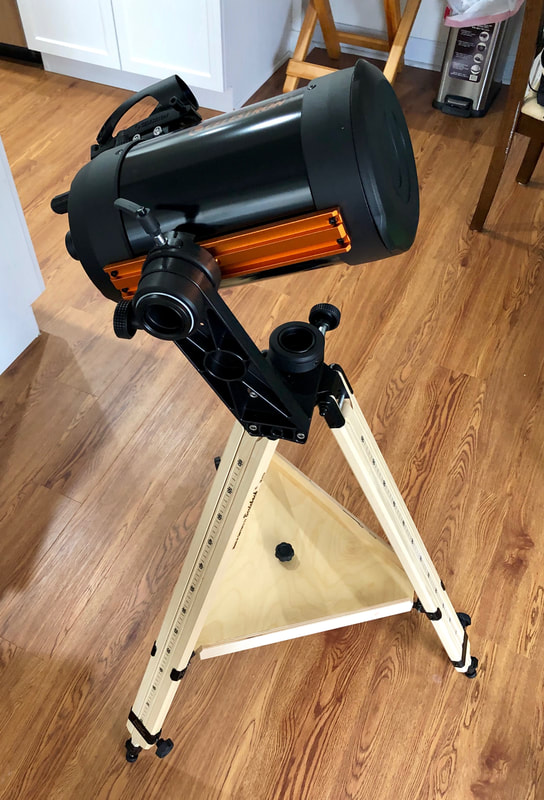
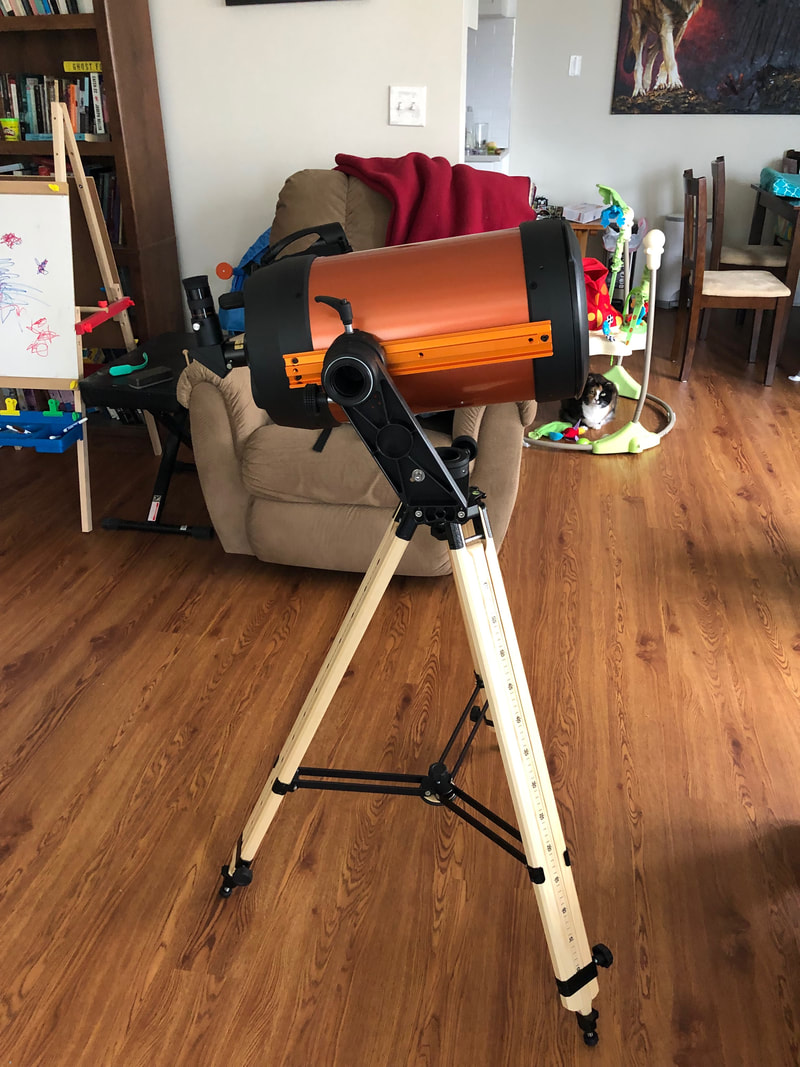
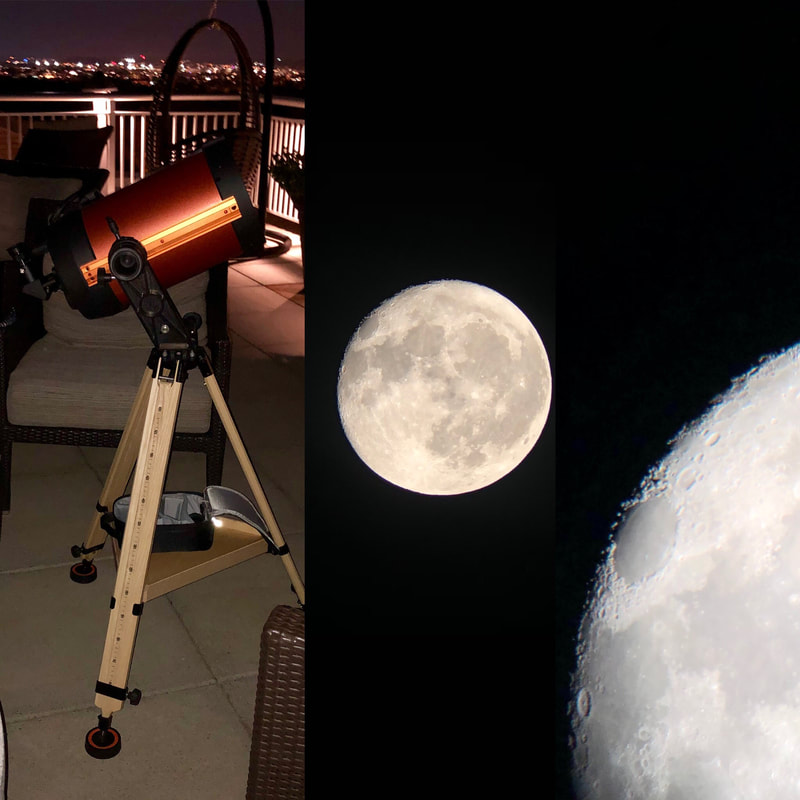
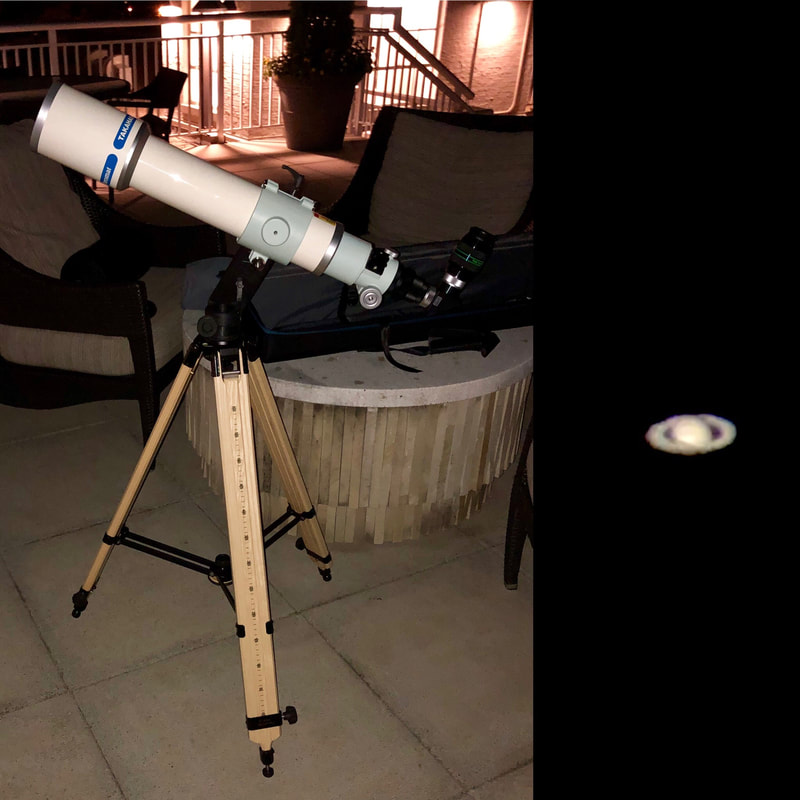
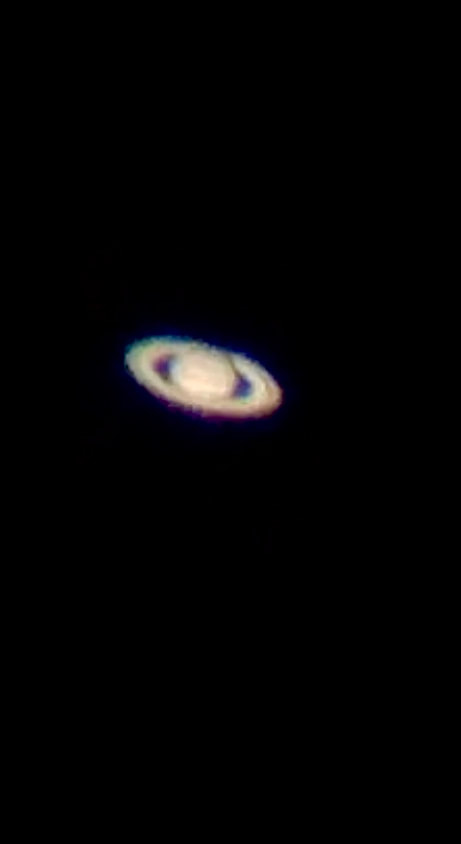
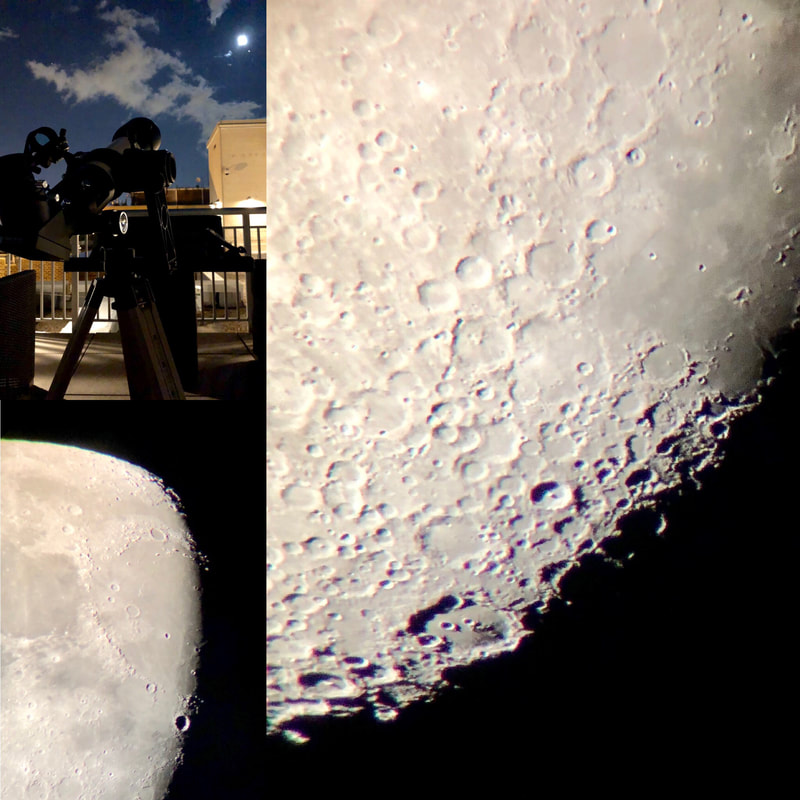
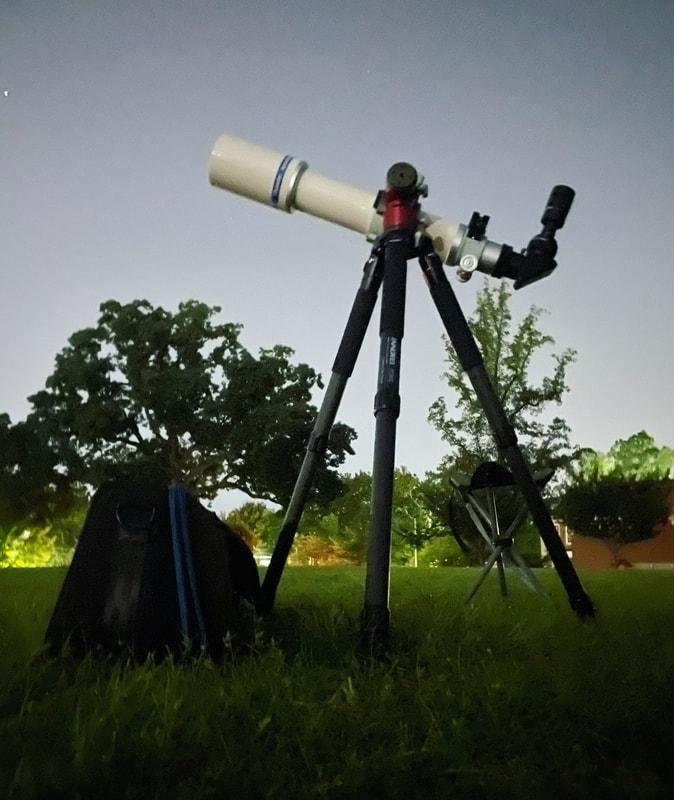

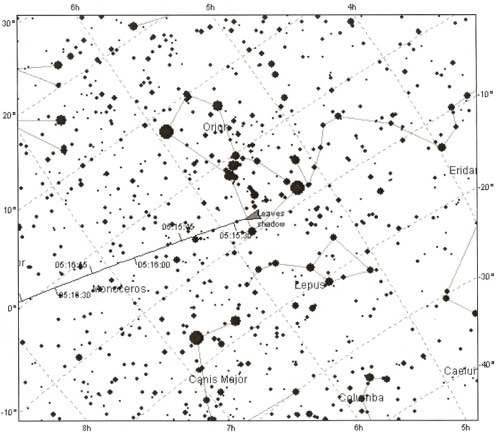
 RSS Feed
RSS Feed